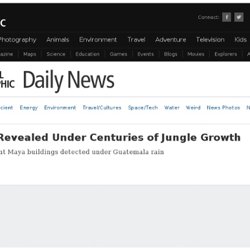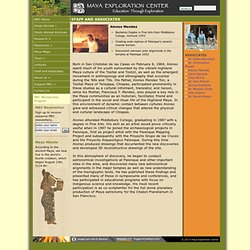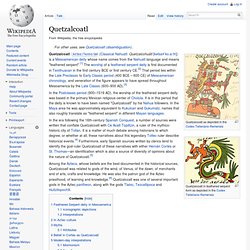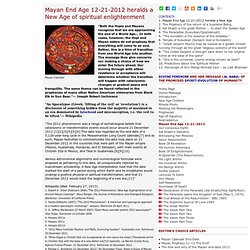

Aztec Civilization. Lost City Revealed Under Centuries of Jungle Growth. Though it's long been known to locals that something—something big—is buried in this patch of Guatemalan rain forest, it's only now that archaeologists are able to begin teasing out what exactly Head of Stone was.

Using GPS and electronic distance-measurement technology last year, the researchers plotted the locations and elevations of a seven-story-tall pyramid, an astronomical observatory, a ritual ball court, several stone residences, and other structures. (See pictures of excavated Maya cities .) Some of the stone houses, said study leader Brigitte Kovacevich , may have doubled as burial chambers for the city's early kings. "Oftentimes archaeologists are looking at the biggest pyramids or temples to find the tombs of early kings, but during this Late-Middle Preclassic period"—roughly 600 B.C. to 300 B.C.
—"the king is not the center of the universe yet, so he's probably still being buried in the household," said Kovacevich, an archaeologist at Southern Methodist University in Dallas. Brigitte Kovacevich. Welcome to the website of the Department of Anthropology at Southern Methodist University.

SMU is located in the vibrant city of Dallas on a campus that has won awards for its beautiful landscaping! Our department was formed 50 years ago (1964-2014) and in Fall of 2014, we will celebrate our Golden Jubilee with distinguished former students giving exciting presentations on their innovative careers and research, and with many fetes and celebrations - you're invited (see "Golden Jubilee")!! The Department of Anthropology is a nationally-ranked program and boasts a distinguished faculty, among whom three have been members of the National Academy of Sciences. Observations_temple_sun.pdf (application/pdf Object) Maya Exploration Center - Alonso Mendez. Born in San Cristobal de las Casas on February 6, 1964, Alonso spent much of his youth surrounded by the vibrant highland Maya culture of the Tzeltal and Tzotzil, as well as the emergent movement in anthropology and ethnography that occurred during the '60s and '70s.

His Father, Alonso Mendez Ton, a Tzeltal Maya of Tenejapa, Chiapas, participated prominently in these studies as a cultural informant, translator, and liaison, while his Mother, Francisca T. The Official Graham Hancock Website: Forum. I don't want GRAHAMHANCOCK.COM to be exclusively a Graham Hancock site, but a place where ideas and perspectives on the past can be put forward and discussed by other writers and researchers as well -- and indeed by anyone with something interesting to say and the ability to say it.

Accordingly I'm offering this section of the site as a FORUM for the excellent writing and thought-provoking ideas of others. I offer no set guidelines as to what is or is not "relevant". If you think that a piece of your own original writing would fit in well in these pages then please submit it to me for consideration. You should feel completely free to express points of view, opinions, ideas and beliefs with which I may profoundly disagree; all that matters is that you should express them well in a manner which may be of interest or of value to others.
Items that you would like me to consider for publication in FORUM should be submitted by email to forum@grahamhancock.com. Authentic Maya. Quetzalcoatl. Quetzalcoatl /ˌkɛtsɑːlˈkoʊɑːtəl/ (Classical Nahuatl: Quetzalcohuātl [ketsaɬˈko.aːtɬ]) is a Mesoamerican deity whose name comes from the Nahuatl language and means "feathered serpent".[1] The worship of a feathered serpent deity is first documented in Teotihuacan in the first century BCE or first century CE.[2] That period lies within the Late Preclassic to Early Classic period (400 BCE – 600 CE) of Mesoamerican chronology, and veneration of the figure appears to have spread throughout Mesoamerica by the Late Classic (600–900 AD).[3] In the era following the 16th-century Spanish Conquest, a number of sources were written that conflate Quetzalcoatl with Ce Acatl Topiltzin, a ruler of the mythico-historic city of Tollan.

Feathered Serpent deity in Mesoamerica[edit] A feathered serpent deity has been worshiped by many different ethno-political groups in Mesoamerican history. Iconographic depictions[edit] Vision Serpent depicted on lintel 15 from Yaxchilan. Interpretations[edit] Myths[edit] Common cultural heritage between the Hopi, Sumerians, Mayans, Tibetans, and others.. ~The Hopi believe Danik to be Guardians in the Clouds.

The Sumerians believed DAK.AN to be Sky Warriors. ~The Hopi believe Sotunangu is a Sky Katsina. The Sumerians believed TAK.AN.IKU were Sky Warriors. These are obviously variations of TAK.AN.U: Mayan End Times Prophecy 12-21-2012. Mayan Calender"Both the Hopis and Mayans recognize that we are approaching the end of a World Age...

In both cases, however, the Hopi and Mayan elders do not prophesy that everything will come to an end. Rather, this is a time of transition from one World Age into another. The message they give concerns our making a choice of how we enter the future ahead. Our moving through with either resistance or acceptance will determine whether the transition will happen with cataclysmic changes or gradual peace and tranquility.